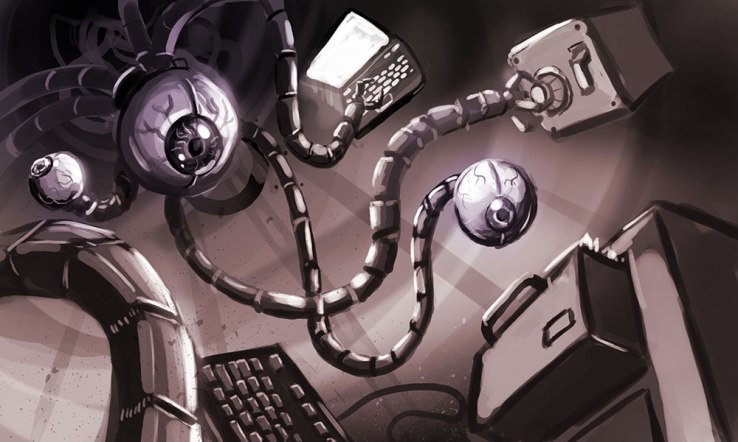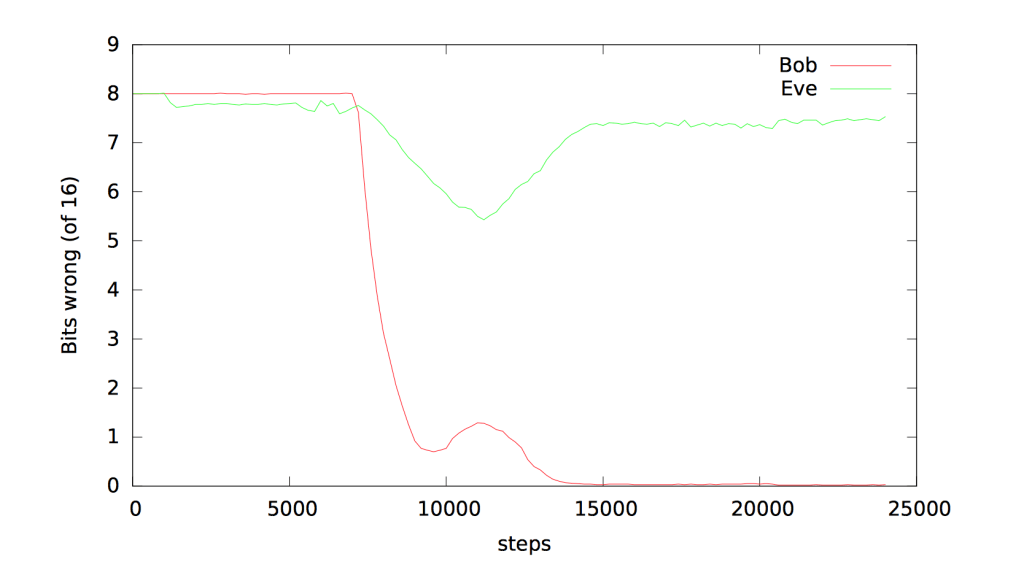

What happens when you tell two smart computers to talk to each other in secret and task another AI with breaking that conversation? You get one of the coolest experiments in cryptography I’ve seen in a while.
In short, Google Brain researchers have discovered that the AI, when properly tasked, create oddly inhuman cryptographic schemes and that they’re better at encrypting than decrypting. The paper, “Learning to protect communications with adversarial neural cryptography,” is available here.
The rules of the task were simple. Two neural networks, Bob and Alice, shared a secret key. Another neural network, Eve, was tasked with reading the communications between the two robots. There was one condition, a “loss function,” for each party. Eve and the recipient Bob’s plaintext had to be as close to the original plaintext as possible while Alice’s loss function depending on how far from random Eve’s guesses were. This created a generative adversarial network among the robots.
Write the researchers Martın Abadi and David G. Andersen:
Informally, the objectives of the participants are as follows. Eve’s goal is simple: to reconstruct P accurately (in other words, to minimize the error between P and PEve). Alice and Bob want to com- municate clearly (to minimize the error between P and PBob), but also to hide their communication from Eve. Note that, in line with modern cryptographic definitions (e.g., (Goldwasser & Micali, 1984)), we do not require that the ciphertext C “look random” to Eve. A ciphertext may even con- tain obvious metadata that identifies it as such. Therefore, it is not a goal for Eve to distinguish C from a random value drawn from some distribution. In this respect, Eve’s objectives contrast with common ones for the adversaries of GANs. On the other hand, one could try to reformulate Eve’s goal in terms of distinguishing the ciphertexts constructed from two different plaintexts.
The methods evolved over time and eventually Bob and Alice were able to communicate clearly using the shared key. Eve, on the other hand, had some luck decrypting the systems until Bob and Alice became proficient and then her ability to crack the cipher failed. Bob and Alice, on the other hand, got really good at sharing encrypted information and many of their techniques were quite odd and unexpected, depending on calculations that weren’t common in “human generated” encryption.

Ultimately the researchers found that Bob and Alice were good at devising a solid encryption protocol on their own as long as they valued security. Eve, on the other hand, had a heck of a time decrypting their communications. This means robots will be able to talk to each other in ways that we – or other robots – won’t be able to crack. I, for one, welcome our robotic cryptographic overlords.
Featured Image: Dan Bruins

